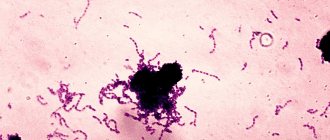Tooth enamel is a durable tissue that is resistant to external influences. But even it can be destroyed. For various reasons, cracks and chips appear on its surface. Cracked teeth are damage that crosses the tooth down towards the root. Damage can also extend under the gum, affecting the pulp chamber and tooth root. The cracked unit does not split into two halves, but the child and pulp are more often damaged.
Due to regular stress, a small crack on the tooth begins to gradually increase. The tooth becomes more sensitive to temperature and reacts to sour and sweet foods. Through microcracks, bacteria enter the tooth and even extend beyond its root, which leads to the development of pulpitis, periodontitis and other serious problems. The most common result of an untreated crack is a split tooth. It will simply break into two fragments and the dentist will have to remove it.
Types of dental cracks
Damage can occur on any area of the enamel; the most dangerous is a split of the tooth root. According to the clinical picture and type of damage, the dentist selects a therapeutic regimen. Types of cracks and their degree of danger:
- Vertical cracks in teeth
are usually shallow, small in size, and affect exclusively the enamel. Usually they do not bother a person and rarely require serious treatment, but they must be closely monitored, since against the background of constant loads, the fracture may increase in size. - Diagonal cracks,
regardless of depth
,
quickly become the main cause of tissue destruction and the appearance of chips and chips on the tooth. Moreover, the destruction affects both the enamel layer, dentin and the pulp chamber. - Horizontal cracks in teeth
pose a similar risk to diagonal fractures and require immediate treatment. It doesn’t matter whether the enamel on the front incisor is cracked or the molar is split across, such damage quickly grows, damaging deep dental tissues. They are the cause of large chips, splitting of the tooth to the top of the root.
If a crack has formed on the surface of the tooth, you should immediately go to the doctor. The lower the degree of damage, the less invasive and costly the intervention will be. Today, dentistry offers a lot of techniques that allow you to “patch” a crack before it causes serious damage, including the loss of a dental unit. But if a microcrack can be eliminated with regular grinding, then if there are chips or a deep split in the tooth, the help of an orthopedist will be required.
Cracks in teeth: photo
Author: Alexander Yaganov Dentist-orthodontist. Work experience more than 7 years. The information is for reference only. Before treatment, consultation with a doctor is necessary.
Please help make this article better. Answer just 3 questions
Symptoms
Small, shallow cracks usually do not show themselves in any way. If the damage is voluminous or located in the root area and puts pressure on the neurovascular bundle, the following symptoms appear:
- Increased sensitivity to temperature and chemical irritants;
- pain when chewing, inhaling cool air;
- swelling of the gums around the damaged tooth;
- formation of chips and chips.
As the symptoms become more severe, the danger of the problem becomes clear. If cracks in the front teeth do not extend beyond the border of the crown, this only affects the aesthetics of the smile line. Increased tooth sensitivity or pain indicate deeper tissue damage.
Prevention of root injuries
The best treatment is disease prevention. To prevent cracks at the root, try to follow a few recommendations:
- be careful and attentive, because half of the cases of root cracks are household injuries, which can be avoided if you take care of yourself and your health;
- carefully choose a clinic and a doctor - before visiting a dentist, check the reviews and ratings of the clinic, certificates and specialist diplomas, do not go to questionable dentists;
- strengthen your teeth - eat healthy foods, do not forget about the importance of calcium and fluoride in strengthening your teeth, choose suitable dental hygiene products.
If symptoms of a root crack occur, do not self-medicate and do not wait for the pain to go away on its own. See your doctor. If the pain is caused by a temporary phenomenon, you will be calm, and if a crack is discovered at the root, treatment at the initial stage will help maintain the health and beauty of your smile, avoid complications and unnecessary expenses.
Treatment
The treatment method is selected according to the size and depth of the fracture. In one case, artistic restoration is sufficient, in another, prosthetics with a crown may be required.
- In case of microcracks, surface grinding of the enamel is performed, with remineralization, restoration with light-curing material and coating with dental varnish.
- Cracks in the front teeth worsen the aesthetics of the frontal area. Veneering will help restore the beauty of your smile - fixing thin plates of ceramic or composite onto the enamel. The enamel layer is prepared to a depth identical to the thickness of the plate, and a microprosthesis is attached to the prepared surface with dental glue.
- Deep horizontal and vertical splits are restored using dental crowns. Prosthetics with crowns are also carried out if the damage has affected the pulp. After depulping and filling the dental canals, the tooth is given the desired shape (grinded), and an artificial crown is fixed on it.
A tooth split into two halves with a damaged root must be removed followed by prosthetics. Endodontic treatment of cracks in a tooth is possible if the root remains intact. Deep damage to the pulp with extensive spread of the pathological process to the periodontium also leads to removal of the dental unit.
What to do if the root is cracked: treatment
There is no therapeutic conservative treatment for this problem. Injections, tablets, compresses will not help. Many people are concerned about the question: “Is it possible to save a tooth with a crack in the root?” There is no clear answer. The doctor’s further actions depend on the severity of the disorder, the type of fracture, and its location. Surgeon intervention is mandatory.
Transverse option
In most cases, the tooth can be saved. The nerve bundle is removed, the root canals are filled with a special compound, and the crack is secured with a pin. The tooth is fixed in a given position with a special splint. Rest and absence of chewing load are prescribed. In case of aggravating factors, it is necessary to remove the tooth root.
Vertical, splintered, angled cracks (oblique)
This is a signal about the beginning of the destruction of the root branch. Each case is considered separately: part of the root with the upper segment of the unit is removed, or complete tooth extraction is required. Restoration is possible using a pin with an inlay and splinting if part of the root remains. In another case, implantation or another type of prosthetics will be required.
Is it possible to avoid the appearance of tooth cracks?
The risk of chipping or other damage to teeth cannot be completely eliminated. But certain precautions can reduce this likelihood:
- Regular hygiene care;
- avoiding excessive chewing loads and injuries;
- use of pastes and brushes recommended by the dentist;
- food high in vitamins, minerals, reduction in sugar and salt in the diet;
- quitting smoking and drinking alcohol;
- avoiding temperature fluctuations while eating or drinking;
- taking multivitamin complexes or calcium supplements with vitamin D;
- using teeth for their intended purpose, and not for opening bottles or biting pencils or nuts.
It is impossible to get rid of cracked teeth without the help of a doctor. Traditional therapy is useless and powerless; you should not put off going to the dentist. Delay will only cause an increase in splitting, destruction of dentin and infection of deep tissues, which can lead to the loss of a dental unit.
Cracked wisdom tooth
There are also cases of damage to wisdom teeth, since during prolonged eruption they are subject to increased destruction and constant exposure to pathogenic bacteria. A figure eight fissure is not a rare phenomenon, and if access to the damaged area is difficult, the doctor is unlikely to waste time on treatment. So if you are experiencing severe discomfort and pain due to a cracked wisdom tooth, the most rational solution would be to remove it. In any case, it does not bear any functional load and is located in that part of the jaw where its absence cannot be determined visually.
Where to carry out preventive measures
Regular dental examinations (at least once a year) will help diagnose the problem at an early stage. When cracks appear, remineralization therapy aimed at strengthening the enamel will help stop further tissue destruction and prevent complications. The doctor will treat the teeth with a composition with a high concentration of fluoride, phosphorus and calcium. Next, the crack is sealed with varnish to strengthen and protect the enamel layer. You can carry out preventive remineralization of enamel in Moscow at the Ilatan clinic.
Root crack diagnosis
Only a doctor can diagnose an injury. First, the specialist makes a preliminary diagnosis based on the patient’s symptoms and complaints. More detailed research is required to clarify.
- Instrumental examination.
By tapping the tooth, the doctor determines whether there are irregularities, fractures or bleeding in the root of the tooth. - X-ray.
The image clearly shows the tooth root crack, its location and the severity of the injury. - Electrical exposure
helps determine the condition of the pulp.
Restoration activities
During the entire recovery period, experts recommend rinsing your mouth daily: between meals, after meals. In this case, antiseptic solutions should be used:
- "Chlorhexidine";
- "Furacillin".
When rinsing, use an Esmarch mug. It must be filled with an antiseptic solution, hung near the washbasin and the rubber tube securely attached.
Use a toothpick to clean the mouth from food debris. You need to use a toothbrush and toothpaste twice a day. After cleansing procedures, massage the gums. This procedure is designed to enhance local blood circulation.
At the rehabilitation stage after the occurrence of cracks in the jaw, physiotherapeutic procedures are used. They are designed to reduce pain and eliminate swelling. To achieve stable results, physiotherapy sessions are carried out in courses. Magnetic therapy, infrared radiation, electrophoresis, and UHF therapy are especially effective.
Another effective rehabilitation method is therapeutic exercises. Special exercises are done while sitting, lying or standing. They are selected taking into account the severity of the victim’s condition. A therapeutic gymnastics session begins with a gentle massage of the facial muscles. After this, do exercises to strengthen the muscles of the shoulders and neck.
In addition, it is worth periodically clenching and unclenching your jaw. This helps develop facial muscles.
Maxillary fracture
Injuries to the upper jaw are diagnosed relatively less frequently (about 30% of the total number of injuries to the bone structures of the dental system). Such fractures are in most cases accompanied by a concussion.
Symptoms of a fracture of the upper jaw
When the maxillary bones are damaged, the following are observed:
- vomit;
- nausea;
- severe pain syndrome;
- the occurrence of sharp pain when chewing;
- difficulty speaking;
- deterioration of respiratory function.
First aid for suspected jaw fracture
If a fracture is suspected, immobilization of the lower jaw with a bandage is necessary. In this case, a hard, even object is placed under the teeth. Then the lower jaw is pressed against the upper jaw and securely fixed with a bandage.
Important! If a fracture of the jaw is suspected, the victim is prohibited from speaking or trying to open his mouth.
In case of loss of consciousness, immobilization is unacceptable (to avoid tongue swallowing and aspiration of vomit). In case of open injury, which is accompanied by bleeding, hemostasis (packing with sterile material) is necessary. To relieve pain and stop bleeding, apply cold to the injured area (for example, a plastic bag with ice). Then the patient’s mouth is freed from vomit and blood clots.
Before emergency personnel arrive, it is worth laying the victim horizontally on his side or ensuring he is in a sitting position. To eliminate severe pain, the patient is given analgesics (Pentalgin, Naproxen). If the victim is unable to swallow the tablet whole, the medicine is crushed to a powder and dissolved in water. If you have painkillers on hand in the form of a solution, it is worth making an intramuscular injection.











